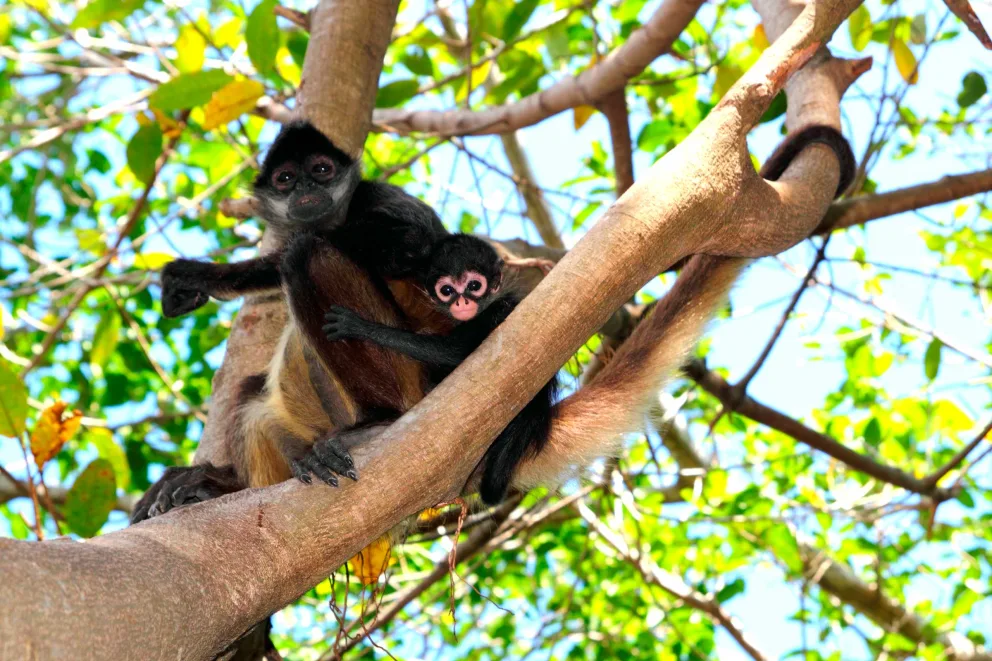Corcovado National Park
Rich in biodiversity, Corcovado is the crown jewel of Costa Rica's national park system.

Adventure
Unique
Luxury
Sustainable
Honeymoon
Nature & Wildlife
Diving
Extreme
Hiking
Why Visit Corcovado National Park?
It protects some 164 square miles (424 square km) of a virgin, primary tropical rainforest. For serious nature lovers and wildlife enthusiasts who want to experience the best of Costa Rica, a visit to the Corcovado National Park is a must.
Here are our favorite reasons to explore Corcovado:
- Diverse Wildlife: Corcovado is home to the largest population of scarlet macaws in Central America. In addition, all six types of Central American wild cats live in the park, as do tapirs, monkeys, and crocodiles.
- Hiking: The park offers some of the best hiking opportunities in Costa Rica.
- Beautiful Beaches: With miles of coastline, where the virgin forest meets the Pacific Ocean, Corcovado National Park has some of the country's most unspoiled tropical beaches.
Where to Stay
Here are some of our recommendations for places to stay.
Things to Do
Get to know one of the most abundant biodiversity areas in Costa Rica. Check out our suggestions.
Costa Rica's Wild Side: Corcovado National Park
Corcovado National Park is a natural wonder of the world, located on the Osa Peninsula in southern Costa Rica. Founded in 1975, the park protects about a third of the Osa Peninsula, including virgin lowland tropical rainforest, beaches, rivers, waterfalls, mangroves, and more. At some 424 square kilometers (164 square miles) in size, Corcovado is Costa Rica's largest national park.
Corcovado represents nature at its best. There are four different ranger stations in the park and a network of trails. You'll need a guide when hiking in the park, and if your hotel hasn't arranged this, you'll find one in Puerto Jimenez or Drake Bay. In short, wildlife lovers need to come to Corcovado.

Best Time to Travel to Corcovado National Park
The best time to visit Corcovado is during the dry season, from January to April. During this time, there's little-to-no rainfall and reliable, sunny weather. Unfortunately, this is also the most popular and expensive period.
Afternoon showers are expected during the green season (May through August/September), but you'll get the best value as the nearby eco-lodges drop their rates. Avoid September and October as many hotels are closed during these two rainiest months. Also, during this time, you might find many of the trails in the park closed as well.

The Weather in Corcovado National Park
Most visitors to the Osa Peninsula and Corcovado National Park notice how green this part of Costa Rica is. Costa Rica is a verdant country, to begin with, but down here in the deep southern zone; you'll find more hues and tones of green than you'll see anywhere else. Welcome to the jungle!
These greens result from a lot of rain - down here in the rainforest, there's a lot of precipitation, and it can rain year-round. The driest of the year runs from January to April, a shorter dry season than most other parts of Costa Rica. During this time, you might still see rain, but you're more likely to see hot and sunny days. The rest of the year is much wetter.
Rain or shine, Corcovado National Park is hot and humid all year round. Expect high humidity and temperatures in the upper 80s to 90s F.

Is the Corcovado National Park Safe?
If we're talking about crime, then yes, the Corcovado National Park is safe, no people live here except for park rangers and naturalists. Poaching and illegal gold mining can be an issue, but this is nothing that will affect tourists and visitors in any way.
The biggest dangers in Corcovado come from the weather and the wildlife. So be careful where you tread, and never leave the trails. Nowadays, it's illegal to enter the park without a guide, so the danger of getting lost is now greatly diminished. Guides will also know where and how to avoid the critters (insects and snakes, mostly) that can hurt you.
Another danger in Corcovado National Park comes from the ocean. With miles of remote, jungle beaches, you won't find any lifeguards in Corcovado National Park, and rough seas with rip currents are expected. So be very careful when swimming in the ocean here.

How to Get to Corcovado National Park
Juan Santamaria Airport (Airport Code SJO), outside the capital city of San José, is the closest international airport to Corcovado National Park.
Distance & Driving Time to Corcovado National Park
From SJO Airport: 230 miles (370 kilometers), about 8 hours.
All Costa Rican Vacations packages include an airport "meet and greet" service and private transfers with English-speaking drivers. This means you're all set when you arrive in-country - just sit back, relax, and our driver will get you to your destination.
With the Corcovado National Park, however, we don't recommend driving. It's too far away. Instead, you're better off flying down to the Osa Peninsula on one of Costa Rica's domestic flight routes.
A flight from San Jose to Drake Bay or Puerto Jimenez (Drake Bay on the north of the Osa Peninsula, Puerto Jimenez in the south) - the two airstrips closest to Corcovado National Park - takes around an hour. Which airstrip you fly to depends on the hotel you're staying at. Once you land, the hotel will pick you up.
In the case of the Drake Bay hotels, you'll also have a boat transfer included upon arrival, as many of these places are only accessible from the ocean. Another option for Drake Bay is to fly into Palmar Sur and take a longer boat ride through the River Sierpe and its mangroves from there.